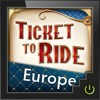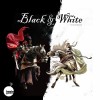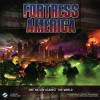
Twonky
gamer level 5
4155 xp
4155 xp
followers
21
21
Use my invite URL to register (this will give me kudos)
https://boardgaming.com/register/?invited_by=twonky
profile badges




recent achievements

Explorer - Level 3
Earn Explorer XP to level up by completing Explorer Quests!
Earn Explorer XP to level up by completing Explorer Quests!

Knight-errant
Be loyal to the general Good. Give 25 hearts each to 10 different games.
Be loyal to the general Good. Give 25 hearts each to 10 different games.

Follow a Local Game Store
Follow a local game store. The purpose of following is to get notifications when comments are added to the board.
Follow a local game store. The purpose of following is to get notifications when comments are added to the board.

Comment on your favorite LGS
Add a comment on your favorite local game store page to tell people what you like about your LGS.
Add a comment on your favorite local game store page to tell people what you like about your LGS.



























































































Hive: Carbon
Although this review is written for Hive: Carbon it applies to Hive as well as these games are identical except for their appearance.
So let’s talk about that first; appearance. Hive: Carbon is a beautiful game in it’s elegant simplicity. This game consists of 26 bakelite pieces in black and white with an image of an insect carved into each one. These pieces are quite heavy for their size but they are durable. You probably couldn’t break them if you tried. The durability of the pieces also makes this a perfect travel game since you can play this anywhere in any condition and on any surface since there is no board, the game pieces create the board as you play. Handily enough the game also comes with a nice textile zipper bag for storage when you travel with the game.
But enough about how it looks, let’s get to how it plays. As a few have stated in their reviews here it is reminicent of chess. Like chess you have pieces that move in their own distinct way and you move one piece on your turn and then pass to the opponent just like chess. The game is also won by capturing your opponents king piece or Queen Bee as it is called in Hive.
This however is where the similarities end. In Hive you begin the game with an empty board. One player then places any one of his pieces on the board. This is the beginning of the hive, as the game board is called, and all pieces has to be connected to the hive at all times. This continues until you place your Queen Bee on the board which can be no later then the 4th piece you place. When the Queen has been placed you are then free to move your pieces in the manner described in the rules. Some pieces move far, some move short, some can climb onto and pin other pieces or jump to the end of a straight line. In your turn you can either move a piece, if you have placed your queen on the board, or place a new piece.
There is also no way of eliminating your opponents pieces but they can be hindered from moving in varying ways.
The object then is to completely surround your opponents Queen and therby immediately win the game.
So you can see the diffrences from chess are quite big. Pieces enter during the game rather than leave during the game. There is no fixed board but an ever changing playing field as the pices move about. You select the pieces you wish to use as you play. You can even finish the game without ever having placed some of your pieces. This brings a lot of variety to the game and think that is quite nice to see in an abstract.
This is in my oppinion makes Hive a very good game for those who like abstract games such as Chess or Go. It is very easy to learn, you just have to remember how each piece can move and there are very few exeptions to the rules. But it is a deep game like other abstracts and you can probably study it for many years to come if you so wish. The box states a playing time of 20 minutes and in my experience that seem to be true. Some games may take 10 minutes and some may take 30 minutes. This all depends on the players skill level ofcourse. I would recomend this to almost all kinds of gamers, especially if you like abstract 2 player games that play fairly qiuickly and are perfect to travel with.